- Understanding Phytophthora on Tomatoes
- Symptoms of Phytophthora on Tomatoes
- Life Cycle of Phytophthora
- Conditions Favorable for Phytophthora
- Management of Phytophthora on Tomatoes
- Conclusion
- Importance of Fighting Phytophthora
- Early Detection Methods
- Visual Inspection
- Fruit Bagging
- Soil Testing
- Sticky Traps
- Plant Health Monitoring
- Cultural Practices to Prevent Phytophthora
- Crop Rotation as a Control Measure
- Chemical Treatments for Phytophthora
- 1. Fungicides
- 2. Systemic Fungicides
- 3. Protective Fungicides
- 4. Rotational Fungicides
- 5. Pre-Plant Fungicides
- Biological Controls for Phytophthora
- 1. Trichoderma species
- 2. Bacillus species
- 3. Mycorrhizal fungi
- 4. Resistance-inducing agents
- 5. Biological fungicides
- Physical Barriers as a Preventive Measure
- 1. Mulching
- 2. Raised Beds
- 3. Row Covers
- 4. Trellising
- 5. Crop Rotation
- Irrigation Management for Phytophthora Control
- 1. Avoid Overwatering
- 2. Implement a Well-Designed Watering System
- 3. Use Mulch
- 4. Time Watering Properly
- 5. Remove Excess Water
- 6. Rotate Irrigation Zones
- 7. Monitor for Signs of Stress
- Harvesting and Post-Harvest Handling Guidelines
- Harvesting:
- Handling:
- Storage:
- “Question-Answer”
- What is Phytophthora and how does it affect tomatoes?
- What are some signs and symptoms of Phytophthora on tomato plants?
- How can I prevent Phytophthora on my tomato plants?
- Are there any natural treatment methods for Phytophthora on tomatoes?
- Is it possible to save tomato plants that are already infected with Phytophthora?
- “Video” How to Protect your Tomato Plants from Pest and Disease?
Phytophthora, also known as tomato blight or late blight, is a devastating disease that affects tomatoes. It is caused by a pathogen called Phytophthora infestans, which thrives in moist and humid conditions. This disease is notorious for its rapid spread and ability to wipe out entire tomato crops. However, with the right treatment methods, it is possible to fight Phytophthora and protect your tomatoes.
Prevention is key when it comes to Phytophthora. The first step in fighting this disease is to implement preventive measures to reduce the risk of infection. This includes practices such as crop rotation, proper sanitation, and avoiding overwatering. By rotating tomato crops with non-host plants, you can disrupt the lifecycle of the pathogen and reduce the chance of infection. Sanitizing tools, equipment, and garden beds can also help prevent the spread of Phytophthora. Additionally, avoiding overwatering and ensuring proper drainage can create an environment that is less favorable for the pathogen to thrive.
Early detection and intervention are crucial in controlling Phytophthora.
Early detection and intervention are crucial in controlling Phytophthora. Regularly inspect your tomato plants for any signs of infection, such as brown spots on the leaves or stems, wilting, or fruit rot. If you suspect Phytophthora, it is important to act quickly. Remove and destroy any infected plants, including their roots, to prevent the spread of the disease. It is also recommended to prune the plants to increase airflow and reduce the humidity that favors the pathogen. Be sure to dispose of the infected plants properly by bagging and discarding them in the trash, or burning them if allowed in your area.
Fungicides can be used as a treatment option for Phytophthora. There are several fungicides available that are specifically designed to combat this disease. It is important to carefully follow the instructions on the fungicide label and apply it as directed. Fungicides should be applied preventively or at the first sign of infection for best results. However, it is worth noting that continuous use of fungicides can lead to the development of resistant pathogens, so it is important to rotate between different types of fungicides to avoid resistance.
In conclusion, fighting Phytophthora on tomatoes requires a combination of prevention, early detection, and intervention. By implementing preventive measures, regularly inspecting your plants, and using fungicides when necessary, you can effectively combat this devastating disease and protect your tomato crops.
Understanding Phytophthora on Tomatoes
Phytophthora is a destructive group of plant pathogens that can cause significant damage to tomato plants. It is a genus of oomycetes, or water molds, that are known for causing numerous plant diseases. Phytophthora infestans, the causative agent of the Irish potato famine, is perhaps the most well-known species of this genus.
Symptoms of Phytophthora on Tomatoes
Identifying the symptoms of Phytophthora on tomatoes is crucial for early detection and effective management. Some common symptoms of Phytophthora infection on tomato plants include:
- Wilting of leaves and stems
- Brown discoloration of stem bases
- Root rot
- Yellowing of foliage
- Fruit rot with a brown, leathery appearance
Life Cycle of Phytophthora
Phytophthora has a complex life cycle that involves both sexual and asexual reproduction. The oospores, which are thick-walled sexual spores, survive in the soil or infected plant debris. These oospores germinate and produce swimming zoospores when conditions are favorable.
The zoospores are motile and are attracted to tomato root exudates. They penetrate the plant tissues and invade the root system, leading to root rot and subsequent pathogen spread. The asexual spores, called sporangia, are produced on infected plant tissues and are dispersed by wind, water, or mechanical means.
Conditions Favorable for Phytophthora
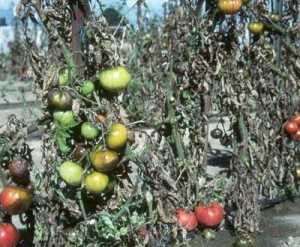
Phytophthora thrives in cool, wet conditions. High humidity, excessive rainfall, and poor drainage can create the perfect environment for this pathogen to spread. Overwatering, splashing water, and irrigation systems can also contribute to the spread of Phytophthora.
Management of Phytophthora on Tomatoes
Effective management of Phytophthora on tomatoes involves a combination of cultural practices, preventive measures, and chemical treatments. Some recommended management strategies for controlling Phytophthora include:
- Planting resistant varieties
- Improving soil drainage
- Avoiding overwatering
- Practicing crop rotation
- Using fungicides
Conclusion
Understanding Phytophthora and its impact on tomatoes is essential for successful management of this destructive pathogen. By identifying the symptoms, understanding the life cycle, and implementing appropriate management strategies, tomato growers can minimize the damage caused by Phytophthora and ensure healthy tomato crops.
Importance of Fighting Phytophthora
Phytophthora is a devastating plant pathogen that poses a significant threat to tomato crops. This fungal-like organism can cause severe damage to the plant’s roots, stem, and fruit, resulting in reduced yields and even complete crop loss. Therefore, it is crucial to implement effective treatment methods to combat this disease and protect tomato plants.
There are several reasons why fighting Phytophthora is of utmost importance:
- Preservation of Tomato Crop: Phytophthora can rapidly spread and infect entire tomato fields, leading to extensive economic losses for farmers. By fighting this pathogen, we can help preserve tomato crops and ensure a stable food supply for both local and global markets.
- Prevention of Yield Reduction: Phytophthora attacks tomato plants at various stages of growth, including seedlings, mature plants, and fruits. When left unchecked, the disease can cause stunted growth, leaf wilting, fruit rot, and premature plant death, resulting in reduced yields. By implementing effective treatment methods, we can minimize yield reduction and optimize tomato production.
- Protection of Plant Health: Phytophthora not only affects tomatoes but also infects other crops and vegetation. By fighting this pathogen, we can prevent its spread to nearby plants and maintain the overall health of the agricultural ecosystem.
- Sustainability of Agriculture: Tomato cultivation plays a crucial role in both commercial and subsistence farming. By fighting Phytophthora, we ensure the sustainability of tomato production and support the livelihoods of farmers who depend on this crop for their income.
Fighting Phytophthora requires a comprehensive approach involving preventive measures, cultural practices, and the use of fungicides. It is essential for farmers, researchers, and agricultural experts to collaborate and prioritize the development and implementation of effective treatment methods to combat this destructive plant pathogen.
Early Detection Methods
The key to effectively combatting Phytophthora on tomatoes is early detection. By identifying the disease at its early stages, growers can take immediate action to prevent its spread and minimize crop damage. Here are some early detection methods that can be employed:
Visual Inspection
Regular visual inspection of tomato plants is crucial in detecting the presence of Phytophthora. Growers should carefully examine the leaves, stems, and fruits for any signs of disease development. Symptoms to look out for include dark brown or black lesions on the stems and leaves, rotting fruits, and wilting of the plant.
Fruit Bagging
Another method to detect Phytophthora early is by using fruit bagging. Enclosing individual fruits in perforated bags can prevent them from coming into direct contact with contaminated soil or water. By regularly checking the bags for any signs of disease, growers can identify infected fruits and take appropriate action before the disease spreads.
Soil Testing
Phytophthora can survive in soil for extended periods without a host. Conducting regular soil tests can help identify the presence of the pathogen before it infects the tomato plants. Laboratories can test soil samples for the presence of Phytophthora and provide valuable information on the severity of the disease in a particular field.
Sticky Traps
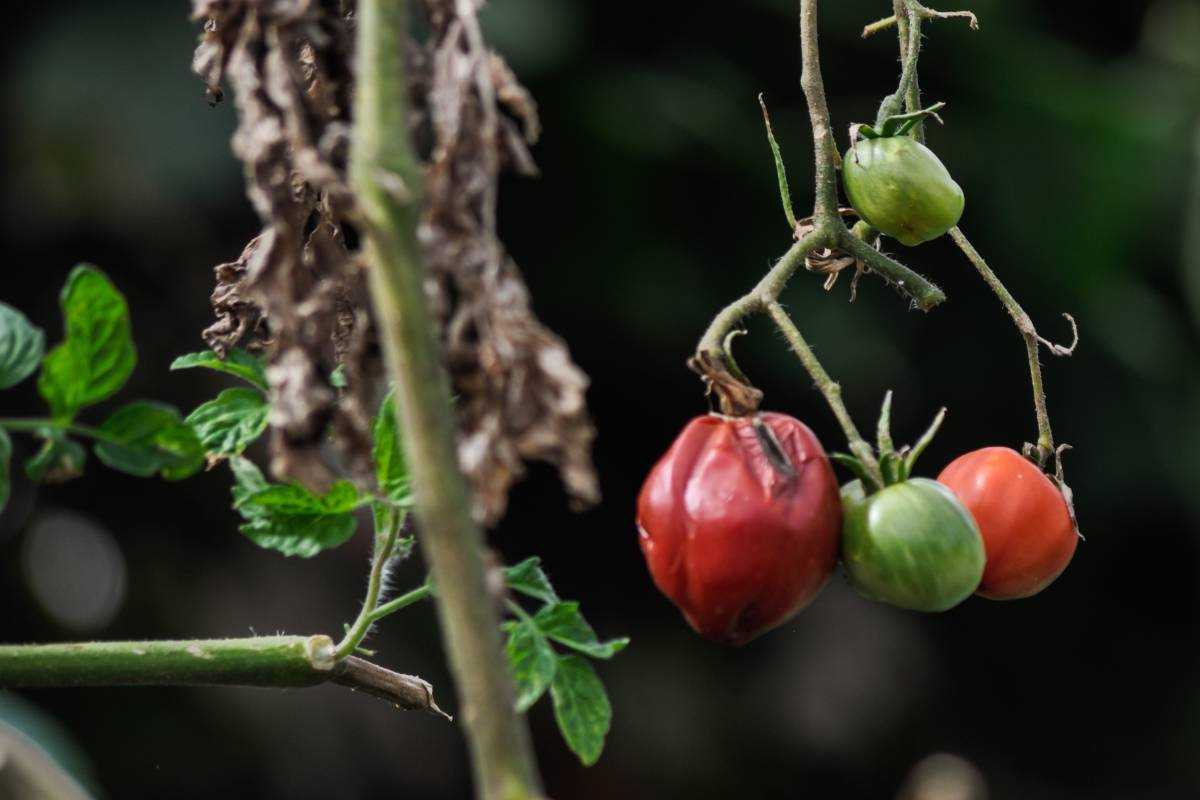
Sticky traps can be used to detect the presence of Phytophthora spores in the air. These traps attract spores, which get caught on the sticky surface. By regularly monitoring the traps, growers can determine if there is an increased presence of Phytophthora spores in the area and take preventive measures accordingly.
Plant Health Monitoring
Keeping track of plant health and growth is essential in early detection. By monitoring the overall vigor and growth patterns of tomato plants, growers can quickly identify any abnormality that may be indicative of Phytophthora infection. Slowed growth, wilting, and discoloration are signs that warrant further investigation.
Early detection is critical in successfully managing Phytophthora on tomato plants. By implementing these methods and staying vigilant, growers can catch the disease at its early stages and implement effective treatment measures to protect their crops.
Cultural Practices to Prevent Phytophthora
Effective management of Phytophthora in tomatoes starts with implementing proper cultural practices. These practices aim to create conditions that are unfavorable for the growth and spread of the pathogen. Here are some important cultural practices to consider:
- Rotate Crops: Avoid planting tomatoes in the same area year after year. Crop rotation helps disrupt the life cycle of Phytophthora and reduces the disease’s buildup in the soil.
- Use Disease-Resistant Varieties: Choose tomato varieties that are resistant to Phytophthora. Resistant varieties have genes that enable them to withstand infection and limit disease development.
- Plant in Well-Drained Soil: Phytophthora thrives in waterlogged soil. Ensure that the planting area has proper drainage to prevent water accumulation and minimize the risk of infection.
- Avoid Overhead Irrigation: Watering from above can splash soil onto the foliage, increasing the chances of Phytophthora infection. Instead, use drip irrigation or water at the base of the plants.
- Avoid Excessive Soil Moisture: Overwatering can create ideal conditions for Phytophthora to thrive. Monitor soil moisture levels and water only when necessary to prevent waterlogged conditions.
- Remove Infected Plants: If any plants show signs of Phytophthora infection, promptly remove and destroy them to prevent the spread of the disease.
- Keep the Garden Clean: Remove and dispose of plant debris, as Phytophthora can survive on dead plant material. Regularly clean tools, equipment, and containers to minimize the risk of contamination.
By implementing these cultural practices, you can create an environment that is less favorable for Phytophthora and reduce the risk of infection in your tomato plants. Remember to combine these practices with other treatment methods for better management of the disease.
Crop Rotation as a Control Measure
Crop rotation is a widely recognized and effective control measure against Phytophthora on tomatoes. By strategically rotating tomato crops with non-host plants, farmers can disrupt the pathogen’s life cycle and reduce its population in the soil. This method helps to minimize the risk of infection and can be used in both conventional and organic farming systems.
Here are some key points to understand about crop rotation as a control measure:
- Planting non-host crops: It is important to choose non-host crops, which are not susceptible to Phytophthora, for rotation. These crops should not be closely related to tomatoes or other susceptible plants. Examples of non-host crops include corn, wheat, soybeans, and lettuce.
- Breaking the disease cycle: Crop rotation interrupts the disease cycle by depriving the pathogen of a host crop. This helps to reduce the population of Phytophthora in the soil, making it more difficult for the pathogen to survive and infect new tomato crops.
- Length of rotation: The length of the rotation period depends on the persistence of Phytophthora in the soil. It is generally recommended to rotate tomato crops with non-host crops for at least two to three years. This allows enough time for the pathogen to decline in population and lose its ability to cause disease.
- Choosing the right rotation crops: When selecting non-host crops for rotation, it is important to consider their impact on soil health and fertility. Some rotation crops, such as legumes, can fix nitrogen and improve soil structure, while others may deplete certain nutrients. Proper planning and soil testing can help determine the best rotation crops for maintaining soil health.
- Supplementing with other control measures: While crop rotation is an effective control measure, it should be used in conjunction with other practices to achieve optimal results. This may include using resistant tomato varieties, practicing good sanitation, and implementing proper irrigation and drainage practices.
Summary: Crop rotation is a valuable control measure against Phytophthora on tomatoes. By rotating tomato crops with non-host plants, farmers can disrupt the pathogen’s life cycle and reduce its population in the soil. This method, when combined with other control measures, can help to minimize the risk of infection and promote healthy tomato production.
Chemical Treatments for Phytophthora
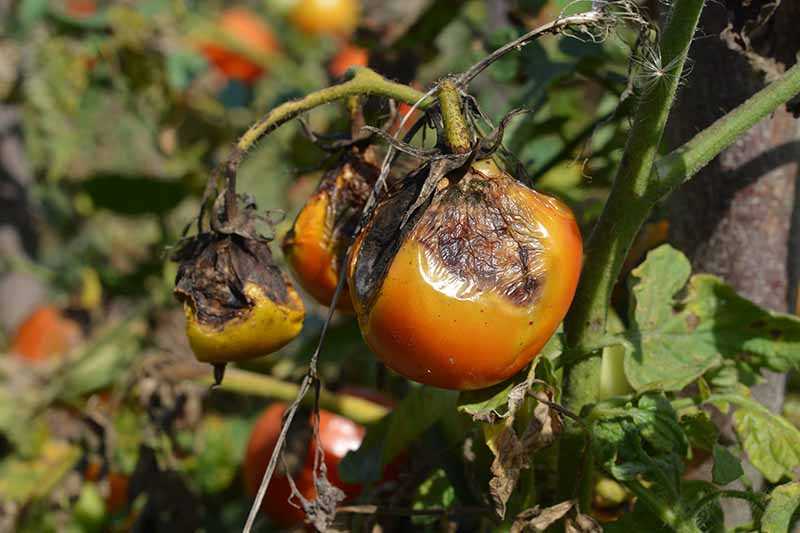
Chemical treatments can be an effective way to control Phytophthora in tomato plants. However, it is important to note that these treatments should be used as a last resort, after attempting cultural and biological control methods. Here are some commonly used chemical treatments for Phytophthora in tomatoes:
1. Fungicides
Fungicides are chemical compounds that can be used to kill or inhibit the growth of fungi. There are several fungicides available on the market that are specifically labeled for use against Phytophthora in tomatoes. It is important to carefully read and follow the instructions on the fungicide label, as different products may have different application rates and timing. Some common fungicides used for Phytophthora control include metalaxyl, mefenoxam, and fosetyl-aluminum.
2. Systemic Fungicides
Systemic fungicides are absorbed by the plant’s roots or leaves and can move throughout the plant, offering protection against Phytophthora in both the roots and leaves. These fungicides are typically applied to the soil as a drench or applied to the foliage as a spray. Examples of systemic fungicides used for Phytophthora control include mefenoxam and metalaxyl.
3. Protective Fungicides
Protective fungicides, unlike systemic fungicides, remain on the surface of the plant and form a protective barrier against Phytophthora. These fungicides are typically applied as a spray to the foliage and need to be reapplied regularly, especially after rain or irrigation. Some commonly used protective fungicides for Phytophthora control include mancozeb, copper-based fungicides, and chlorothalonil.
4. Rotational Fungicides
Rotating between different fungicides with different active ingredients can help prevent the development of fungicide resistance in Phytophthora populations. By using different fungicides with different modes of action, the likelihood of resistance developing is reduced. It is important to carefully read and follow the label instructions when using rotational fungicides, as different products may have different recommended rotation intervals.
5. Pre-Plant Fungicides
Pre-plant fungicides are applied to the soil before transplanting tomato seedlings. These fungicides provide protection against Phytophthora in the early stages of plant development, when the plants are most susceptible to infection. Examples of pre-plant fungicides used for Phytophthora control include mefenoxam and metalaxyl.
When using chemical treatments for Phytophthora, it is important to follow all safety precautions and application guidelines provided by the fungicide manufacturer. It is also important to rotate between different fungicides with different modes of action to help prevent fungicide resistance. Additionally, frequent monitoring and scouting of the tomato plants for symptoms of Phytophthora is essential for timely intervention and effective control.
Biological Controls for Phytophthora
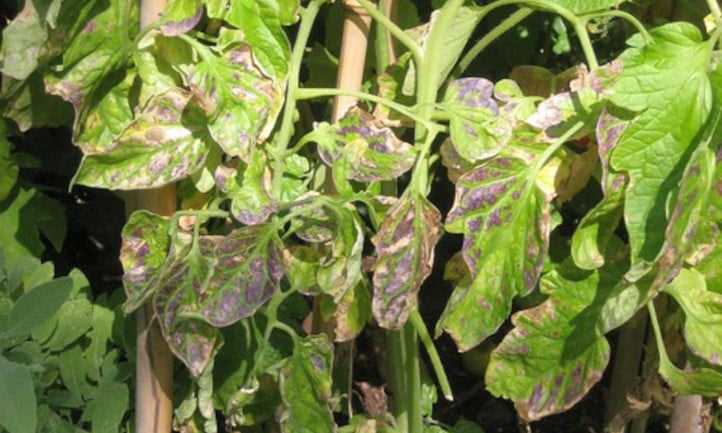
Biological controls offer a sustainable and environmentally friendly approach to managing Phytophthora infestations in tomato plants. These methods utilize natural organisms to suppress or control the growth and spread of the pathogen. Here are some effective biological controls for Phytophthora:
1. Trichoderma species
Trichoderma species are fungi that can colonize the roots and rhizosphere of tomato plants. They act as biocontrol agents by competing with Phytophthora for nutrients and space, thereby reducing its growth and spread. Trichoderma also produces enzymes that can degrade the cell walls of Phytophthora, further limiting its damage to the plant.
2. Bacillus species
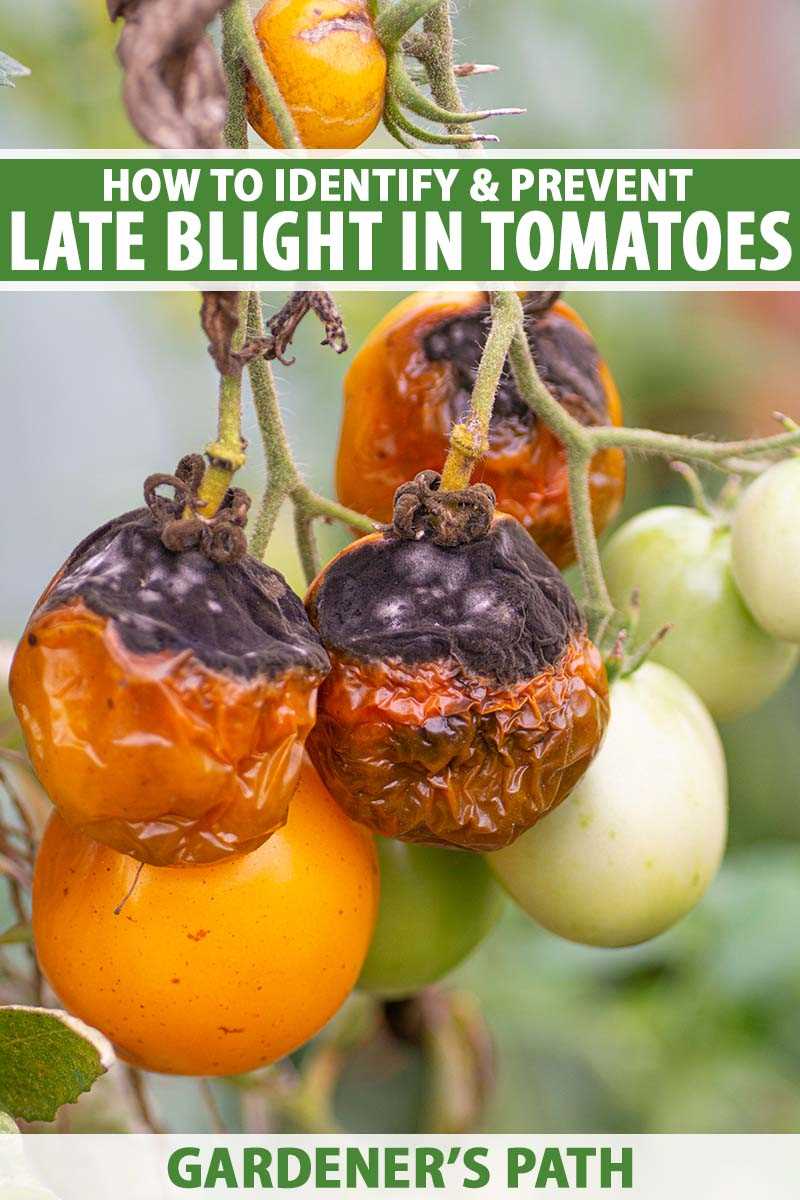
Bacillus species, such as Bacillus subtilis, produce antimicrobial compounds that can inhibit the growth of Phytophthora. These bacteria can be applied as a foliar spray or incorporated into the soil around tomato plants to provide protection against the pathogen. Bacillus species are also known to stimulate the plant’s immune system, enhancing its ability to defend against Phytophthora infection.
3. Mycorrhizal fungi
Mycorrhizal fungi form mutually beneficial associations with the roots of tomato plants. These fungi help improve the plant’s nutrient uptake and can also provide protection against Phytophthora. Mycorrhizal colonization can reduce the severity of Phytophthora infection and enhance the overall health and productivity of tomato plants.
4. Resistance-inducing agents
Some biological controls for Phytophthora involve the use of resistance-inducing agents, such as certain beneficial microbes or plant extracts. These agents can stimulate the plant’s defense mechanisms, making it more resistant to Phytophthora infection. They can be applied as foliar sprays or incorporated into the soil to provide long-term protection against the pathogen.
5. Biological fungicides
Biological fungicides, derived from natural sources such as bacteria or fungi, can also be effective in controlling Phytophthora in tomatoes. These products contain specific strains or extracts that have been shown to inhibit the growth and spread of the pathogen. Biological fungicides offer a sustainable alternative to chemical fungicides, reducing the risk of environmental pollution and minimizing the development of resistant strains.
When using biological controls for Phytophthora, it is important to follow the recommended application rates and timing. These methods may not completely eradicate the pathogen, but they can help manage its impact and reduce the severity of infestations. Integrated pest management practices, including cultural controls and regular monitoring, should also be implemented for effective management of Phytophthora in tomato plants.
Physical Barriers as a Preventive Measure
One effective way to prevent the spread of Phytophthora on tomatoes is to create physical barriers around the plants. These barriers can help to prevent the movement of water, soil, and plant debris that may carry the pathogen. Here are some physical barrier methods that you can use:
1. Mulching
Mulching is a commonly used method to create a physical barrier and protect tomatoes from disease. Applying a layer of organic mulch around the base of the plants can inhibit the splash dispersal of spores. It also helps to regulate soil moisture and temperature, creating an optimal environment for healthy plant growth.
2. Raised Beds
Planting tomatoes in raised beds can provide a physical barrier between the plants and the surrounding soil. Raised beds can help improve soil drainage and reduce the risk of waterlogged conditions, which can encourage the growth of Phytophthora. It also helps to limit soil compaction and reduce the likelihood of soil-borne diseases.
3. Row Covers
Using row covers can effectively create a physical barrier that protects tomato plants from Phytophthora. These covers are made from lightweight fabric or plastic and are placed directly over the plants. Row covers help to prevent the splash dispersal of spores and can also provide some protection against insect pests.
4. Trellising
Trellising tomato plants can help create a physical barrier and reduce the risk of disease spread. By training the plants to grow vertically on stakes or trellises, you can minimize contact between the foliage and the ground. This can prevent the splashing of soil and plant debris onto the leaves, reducing the chances of Phytophthora infection.
5. Crop Rotation
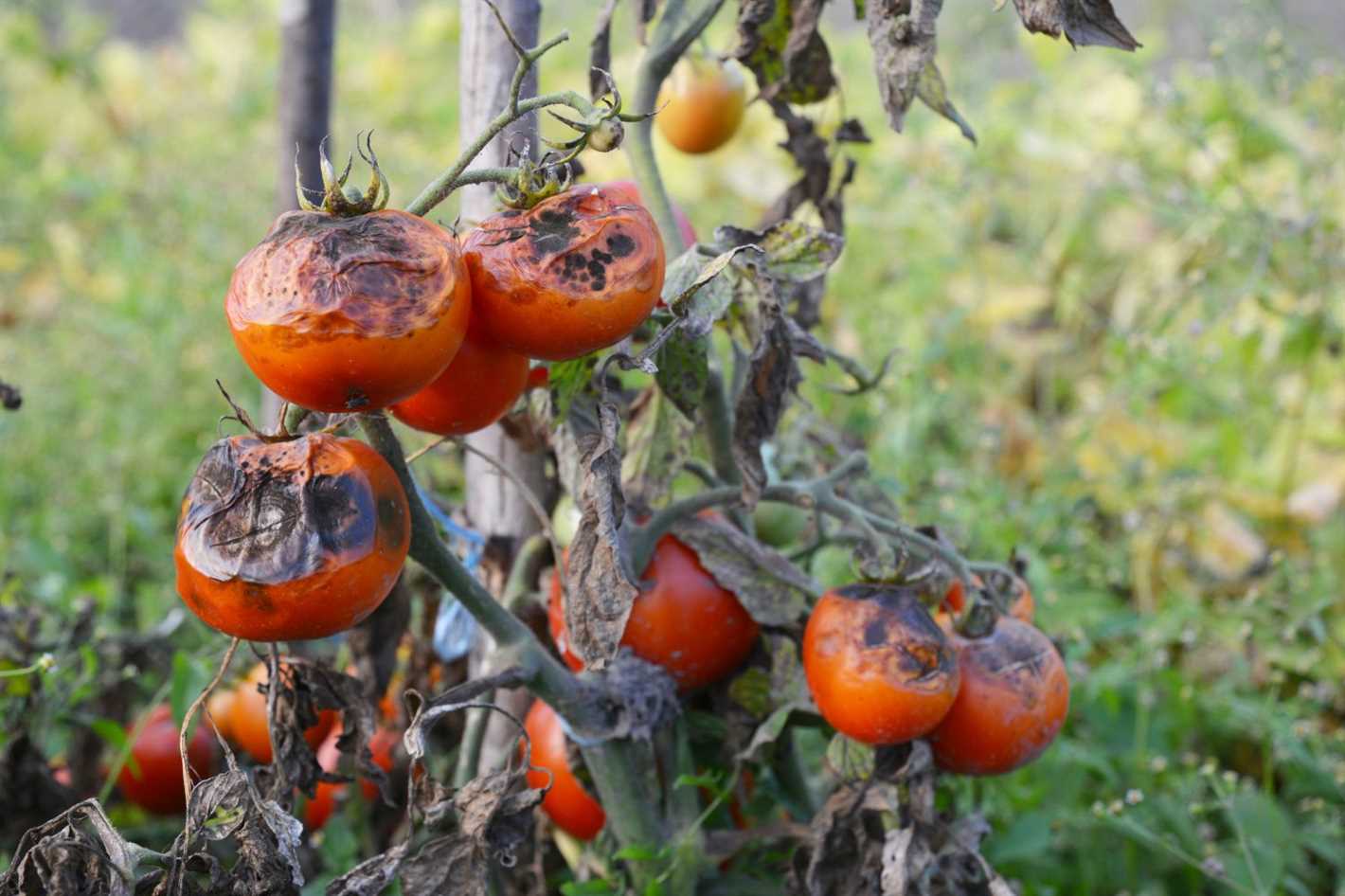
Implementing a crop rotation system can also act as a physical barrier against Phytophthora. By avoiding planting tomatoes in the same area for consecutive seasons, you can help break the disease cycle. This prevents the build-up of pathogens in the soil and reduces the risk of infection for future crops.
Overall, using physical barriers as a preventive measure can significantly reduce the risk of Phytophthora infection on tomato plants. By implementing these methods, you can create an environment that is less favorable for the growth and spread of the pathogen, resulting in healthier and more productive tomato plants.
Irrigation Management for Phytophthora Control
Proper irrigation management is essential in controlling Phytophthora on tomatoes. Phytophthora thrives in moist conditions, so it is important to minimize excess water and maintain a well-drained soil environment.
1. Avoid Overwatering
Overwatering can create a conducive environment for Phytophthora to thrive. Monitor soil moisture levels regularly and only irrigate when necessary. Use tools such as moisture meters or Tensiometers to assess soil moisture levels.
2. Implement a Well-Designed Watering System
Implementing a well-designed watering system can help control Phytophthora. Drip irrigation or soaker hoses are preferable to overhead sprinklers, as they minimize water contact with the foliage and fruits of the tomato plants.
3. Use Mulch
Apply a layer of organic mulch around tomato plants to help maintain soil moisture and reduce the need for frequent irrigation. This also helps prevent excessive water runoff and keeps the soil temperature more consistent.
4. Time Watering Properly
Avoid watering tomato plants in the evening or at night. Watering in the morning allows the foliage to dry out during the day, reducing the chances of Phytophthora infection.
5. Remove Excess Water
If there is excessive water pooling near tomato plants, consider implementing drainage systems or installing raised beds to prevent water accumulation. Drainage is crucial in preventing the pathogen from spreading and infecting the plants.
6. Rotate Irrigation Zones
Rotate irrigation zones to prevent waterlogged areas in the growing area. This will help maintain a well-drained environment and reduce the risk of Phytophthora contamination.
7. Monitor for Signs of Stress
Regularly monitor tomato plants for signs of stress, such as wilting or yellowing leaves. This could indicate either water stress or Phytophthora infection, and appropriate action should be taken promptly.
By implementing proper irrigation management practices, you can minimize the risk of Phytophthora infection on tomato plants and promote their overall health and productivity.
Harvesting and Post-Harvest Handling Guidelines
Once your tomatoes are ready for harvest, it is important to handle them properly to ensure their quality and longevity. Here are some guidelines to follow:
Harvesting:
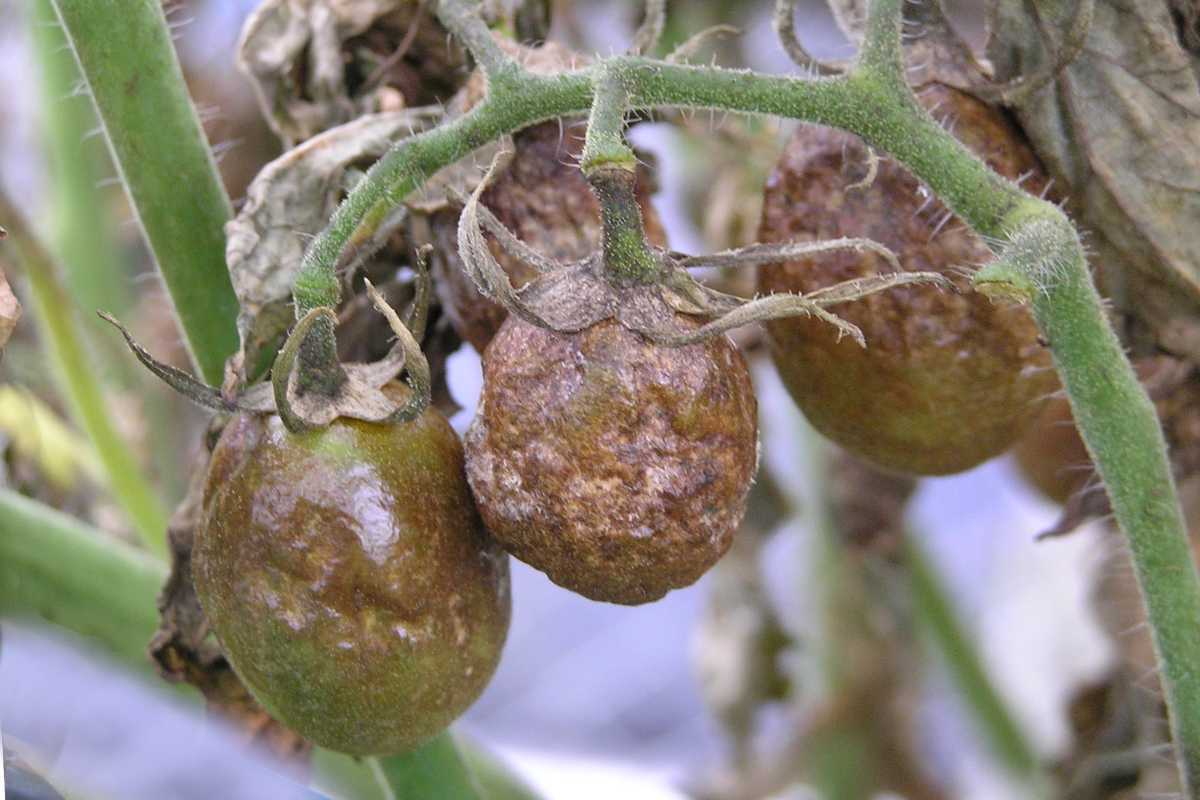
- Harvest tomatoes when they have reached their full color and are firm to the touch.
- Use sharp scissors or pruning shears to cut the stem just above the fruit.
- Avoid pulling or twisting the tomatoes off the vine, as this may damage the plant and affect its overall health.
- Harvest tomatoes in the morning when the weather is cooler, as they will be less prone to damage from heat and sun.
Handling:
- Handle tomatoes with care to avoid bruising or damaging the fruit.
- Place the harvested tomatoes in shallow containers, without stacking them on top of each other.
- Do not wash tomatoes immediately after harvesting, as excess moisture can lead to decay.
- Keep the harvested tomatoes in a cool and well-ventilated location, away from direct sunlight.
Storage:
- Store the harvested tomatoes at a temperature of around 55 to 70°F (13 to 21°C) to maintain their quality.
- Avoid storing tomatoes in the refrigerator, as it can cause their texture to become mealy.
- Regularly check the tomatoes for any signs of spoilage and remove any rotten ones to prevent the spread of disease.
- Store tomatoes separately from other produce, as they can release ethylene gas, which can accelerate the ripening process of other fruits and vegetables.
Following these guidelines for harvesting and post-harvest handling will help you enjoy fresh and high-quality tomatoes for an extended period of time.
“Question-Answer”
What is Phytophthora and how does it affect tomatoes?
Phytophthora is a type of plant pathogen that causes a devastating disease in tomatoes called Phytophthora blight. It thrives in wet, humid conditions and can quickly spread throughout the garden. It causes wilting, yellowing, and eventually death of the tomato plants.
What are some signs and symptoms of Phytophthora on tomato plants?
Signs of Phytophthora infection on tomato plants include wilting, yellowing of the leaves, and black/brown lesions on the stems or fruits. The plants may also have a stunted growth and develop fruit that rots prematurely.
How can I prevent Phytophthora on my tomato plants?
There are several preventive measures you can take to minimize the risk of Phytophthora on your tomato plants. These include planting in well-draining soil, spacing the plants properly to ensure good air circulation, avoiding overhead watering, and regularly inspecting the plants for signs of infection.
Are there any natural treatment methods for Phytophthora on tomatoes?
Yes, there are some natural treatment methods that can help control Phytophthora on tomatoes. These include applying organic fungicides or biopesticides, such as copper-based products or beneficial microorganisms like Trichoderma, to the affected plants. Additionally, practicing crop rotation and removing infected plant debris can also help reduce the spread of the disease.
Is it possible to save tomato plants that are already infected with Phytophthora?
While it can be challenging, it is possible to save tomato plants that are already infected with Phytophthora. One method is to prune off the infected areas and apply a systemic fungicide to control the disease. Additionally, improving the growing conditions by providing adequate sunlight, proper watering, and good drainage can help the plants recover.







